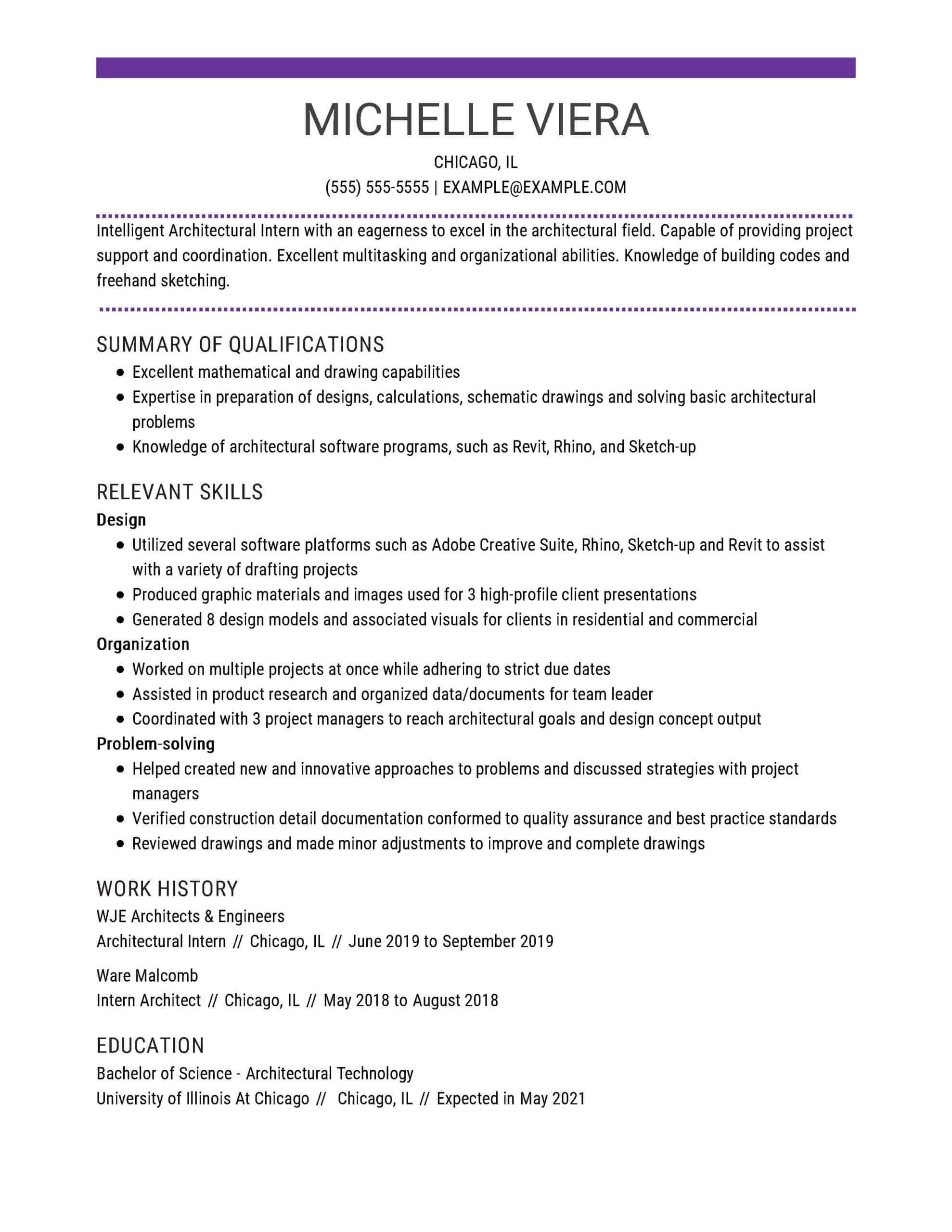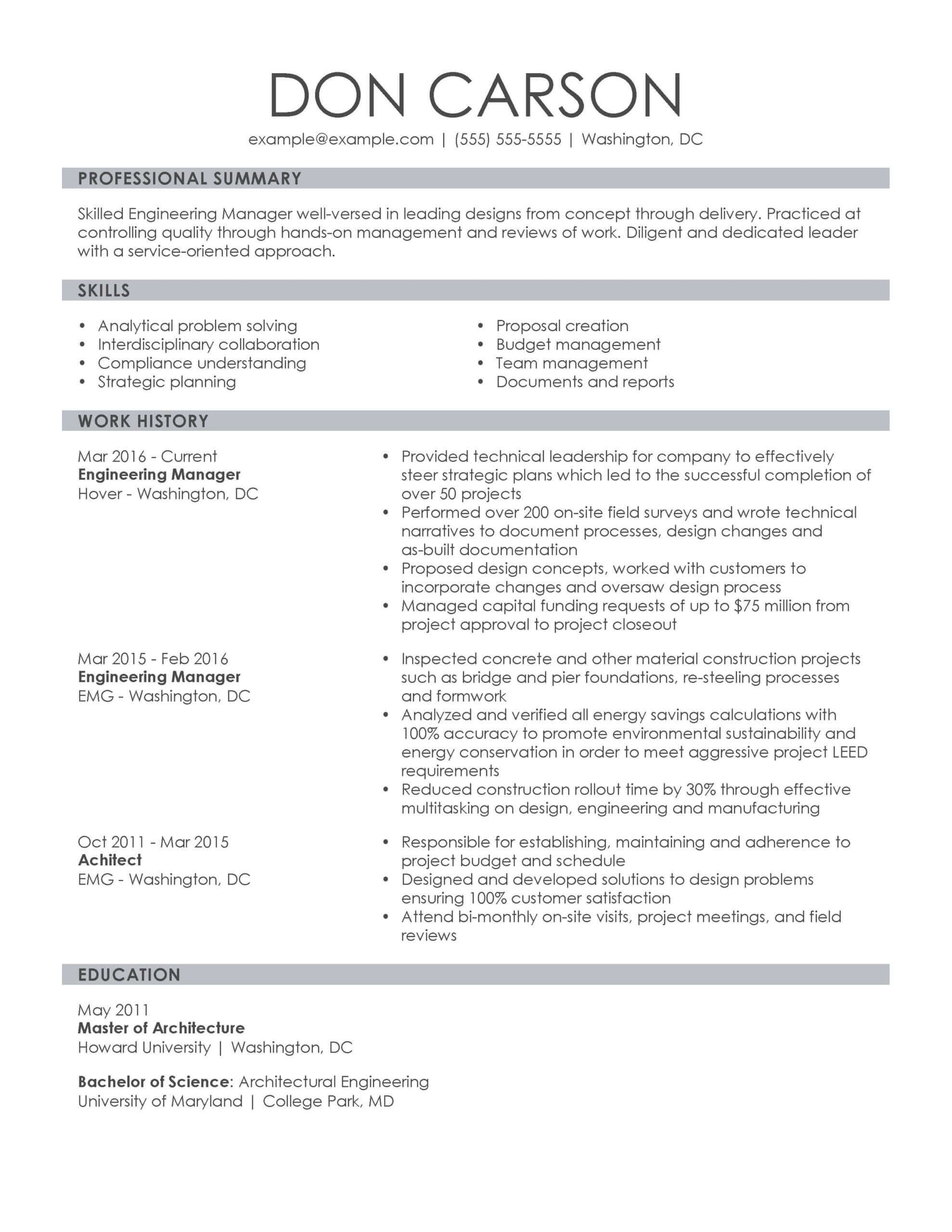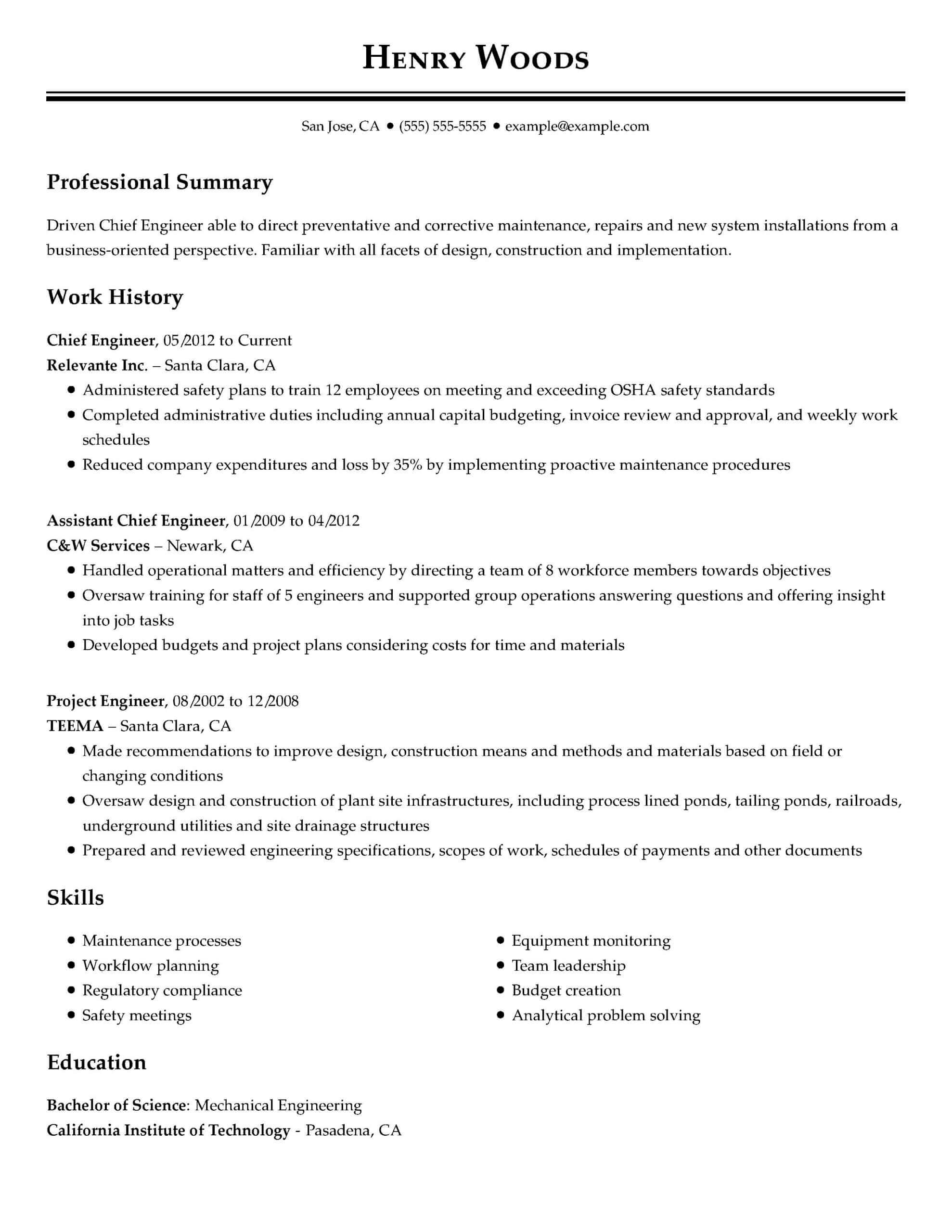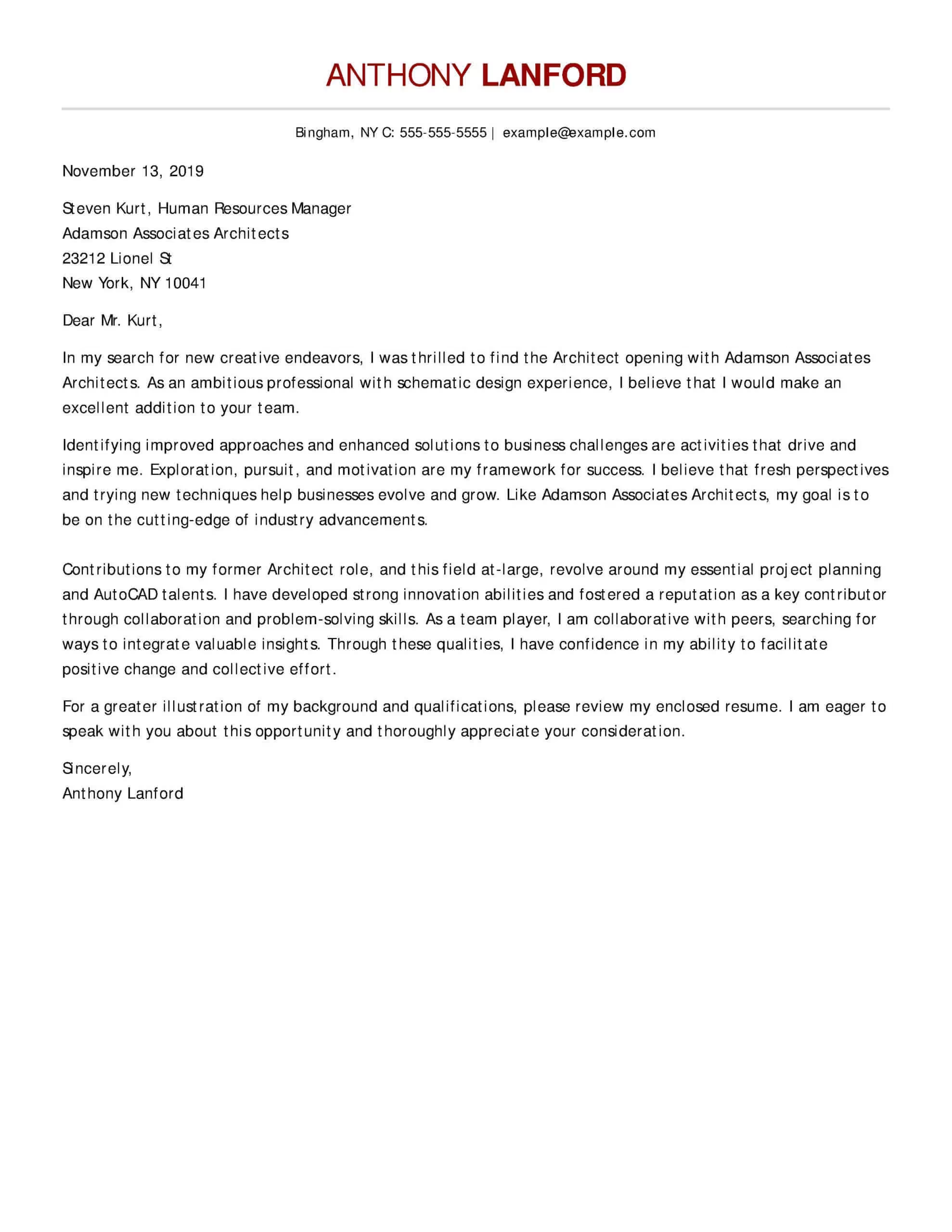Architectural Intern
For job seekers new to the architecture field, a functional format like the one pictured above is often a good fit. Functional resumes focus more on skills and less on work experience. Here, the applicant zeroes in on three of her most valuable skills as a potential hire and provides details for each. More importantly, she expresses those proficiencies in measurable terms, such as “generated 8 design models and associated visuals.” A brief, or even nonexistent, work history doesn’t mean you should skimp on the concrete details. Build my Resume






